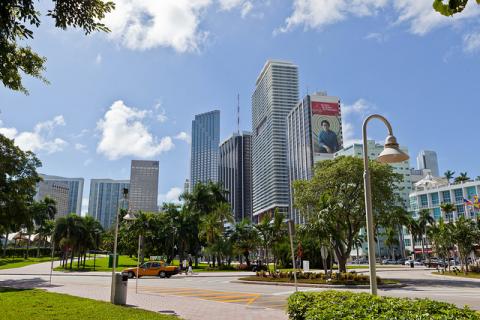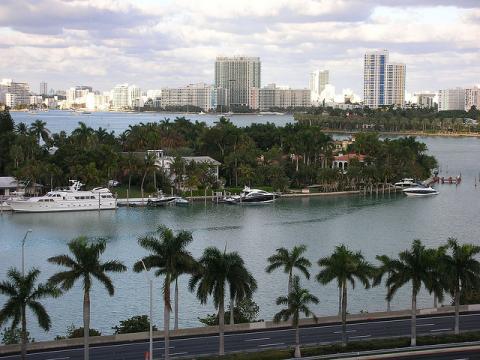Updated June 2017
The City of Miami is the center of a large urban area with a total population of about 5.5 million. According to the U.S. Census Bureau, the city proper had nearly 453,580 residents as of July 2016. Often referred to as “The Magic City” because it is the core of a region that grew from just 110 people in 1896, the city itself has experienced significant growth over the past several decades. Since 2000 it has gained more than 91,000 residents, a growth rate of about 25 percent.The city's racial composition is 11.4% white, 16.4% black, 70.7% Hispanic, and the remainder Asian or other races. Roughly 60 percent of Miami's population is foreign-born, giving Miami the highest concentration of foreign-born residents among the 100 largest metropolitan areas in the United States. Cuba is one obvious source of immigrants, but many immigrants come from all over the Caribbean and Central and South America.
Miami is widely regarded as the gateway city to Latin America in terms of trade and business. Yet Miami also suffers from some unique challenges. Although located right across the causeway from the wealthy resort town of Miami Beach, the city of Miami itself is one of the nation's poorest – ranking fourth among large U.S. cities according to 2012 Census estimates. In fact, according to the Annie E. Casey’s 2017 Kid Count data, nearly two-thirds of all Miami children live in high poverty areas (i.e., census tracts where poverty rates are 30 percent or more). Not surprisingly, perhaps, a 2016 Bloomberg study found that Miami had the greatest degree of income equality among all large U.S. cities.
Faced with these formidable obstacles, community wealth building institutions in Miami are playing a significant role. Miami has a productive group of community development corporations such as East Little Havana CDC, which, since 1984, has developed 13 buildings encompassing 569 affordable housing units and 11 commercial units for small businesses. Supporting the formerly homeless and those at risk of homelessness, Carrfour Corporation oversees around 1,700 units of supportive housing serving more than 3,000 residents. Aiming to provide employment opportunities, job skills training, educational outreach, and healthy, fresh produce for its residents, the nonprofit also developed a 22-acre farm next to one of its sites in 2013, and has since added a café to provide additional job opportunities.
Other city nonprofits are also playing an important role in community wealth building. For example, in 2016, the Urban League of Broward County’s Entrepreneurship Center supported the creation of 44 new businesses and engaged 1,000 people in asset-building workshops. Similarly, Health Foundation South Florida recently catalyzed a Community Building and Economic Prosperity Initiative that is encouraging area anchor institutions to directly support local businesses and create local jobs.
An overview of community wealth building efforts follows:



